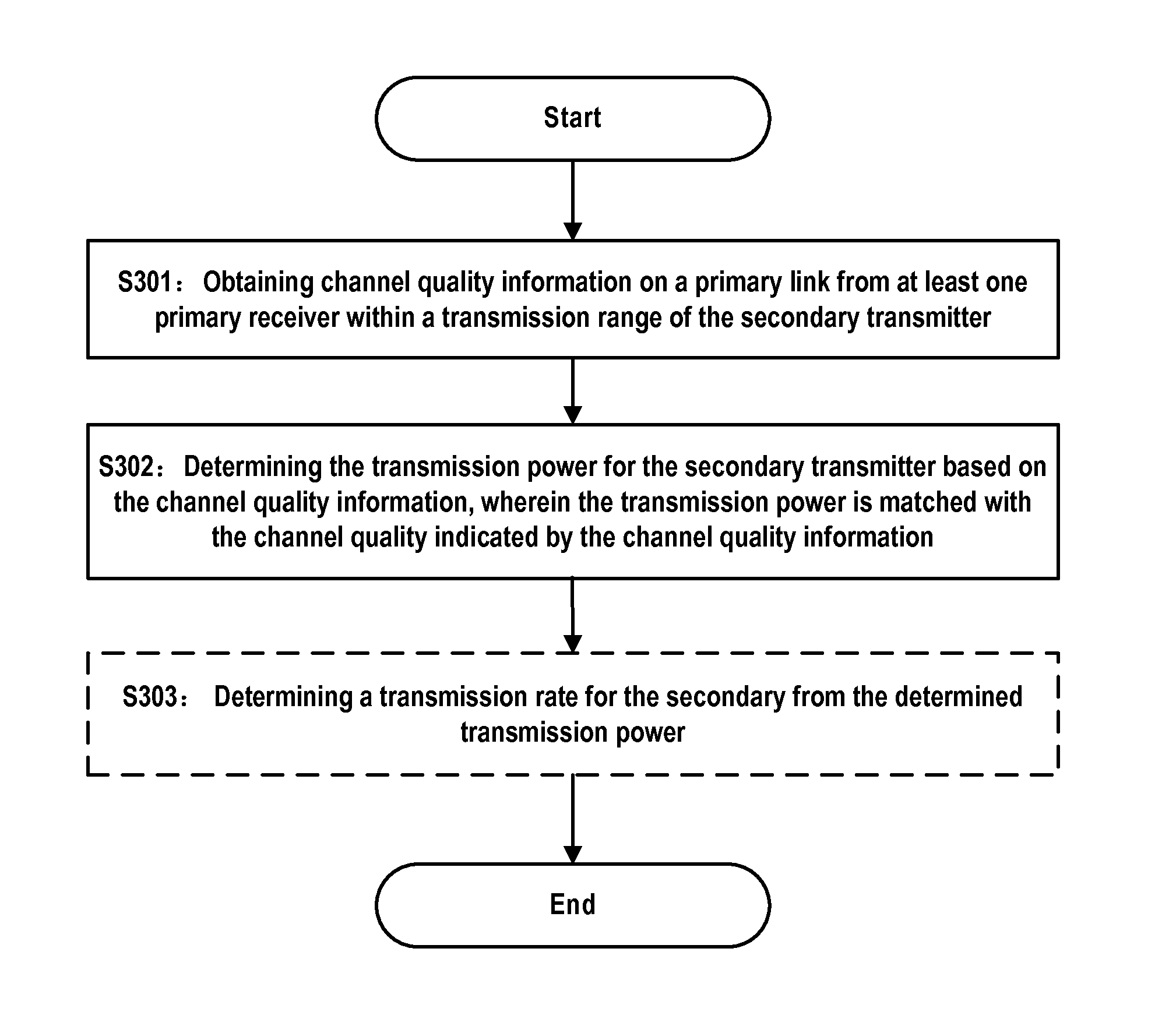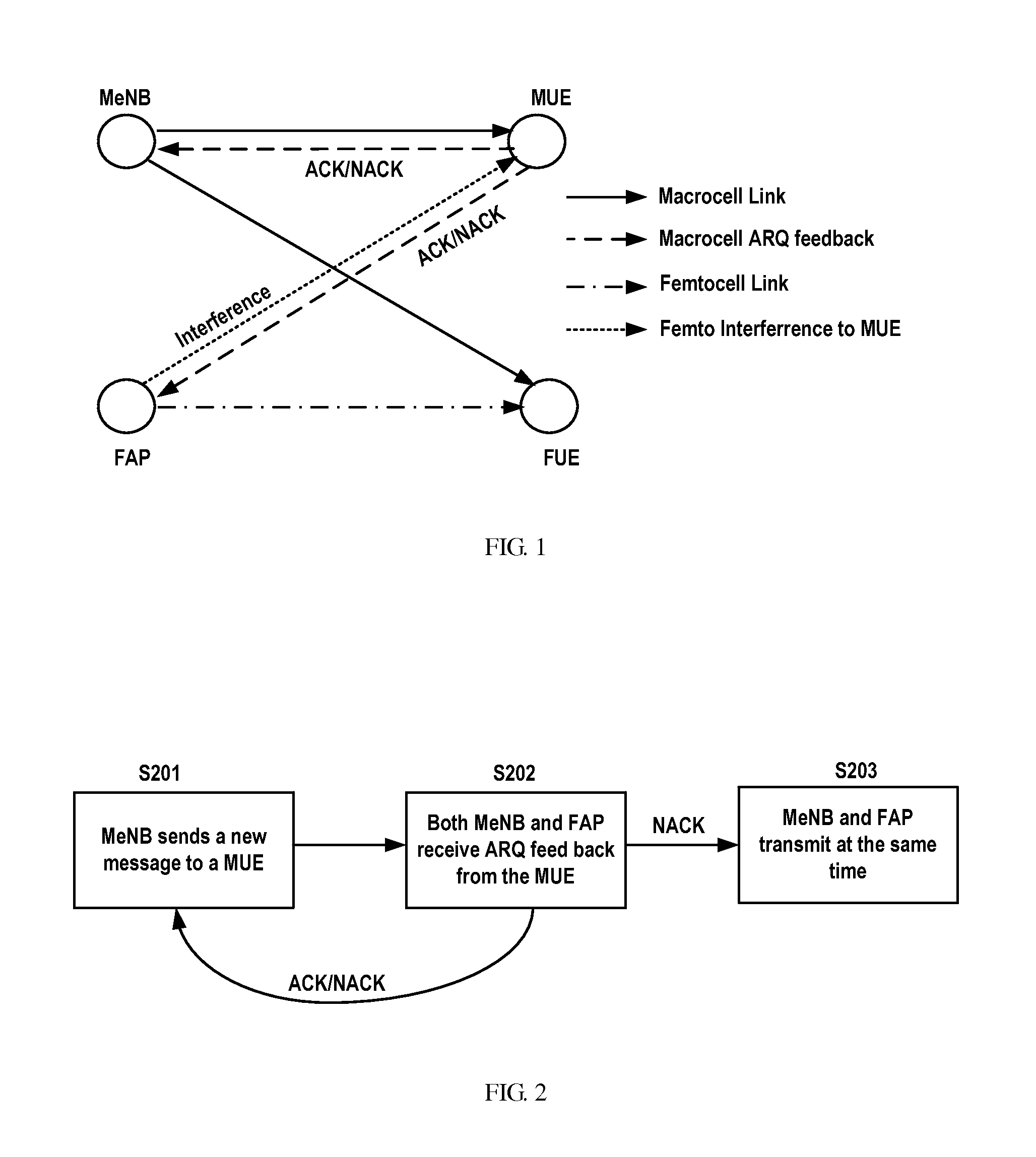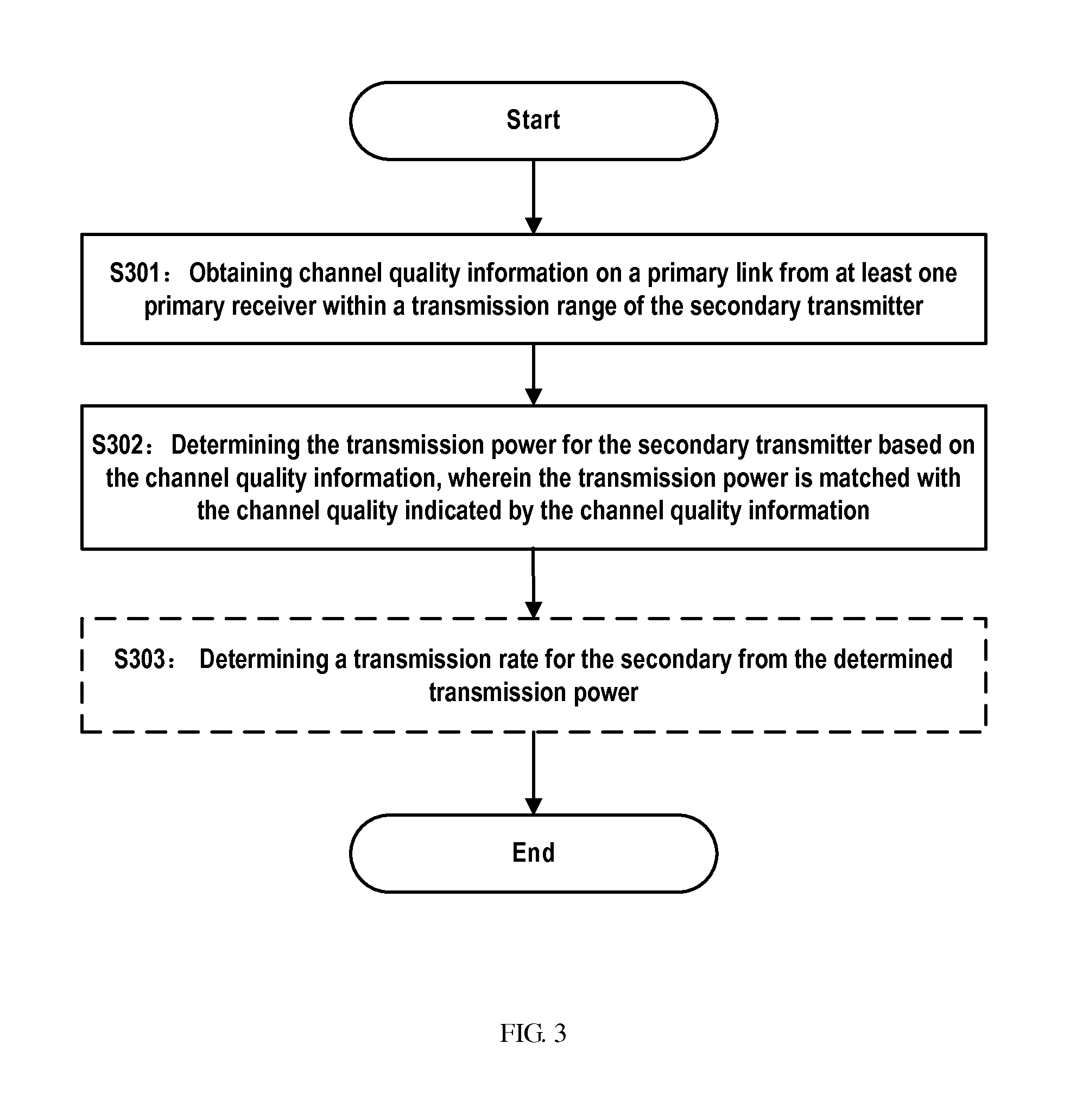Method and apparatus for determining transmission power of a secondary transmitter in a hierarchical spectrum sharing system
a transmission power and hierarchical technology, applied in the field of mobile communication technology, can solve the problems of not being able to connect to the fap, unauthorized macro user equipment (mues) can only connect to the macro enodeb, and the difficulty of coping with such interference, so as to maximize the throughput of secondary transmitters, improve the spectrum efficiency of the whole system, and improve the efficiency of secondary transmitters
- Summary
- Abstract
- Description
- Claims
- Application Information
AI Technical Summary
Benefits of technology
Problems solved by technology
Method used
Image
Examples
case 1
[0065] Scheduling Information being Available at FAP
[0066]In this case, FAP will know whether this MUE within the FTR is active or not and thus the MUE with in the FTR can be protected when it is active (i.e., scheduled). However, due to the long delay in the backhaul connection, it is not practical for FAP to have this knowledge accurately, but the result can serve as a benchmark for comparison.
[0067]In order to quantify the rate loss to the macrocell, it can initially calculate the probability of ñ={tilde over (m)}, i.e. the MUE who has the highest CINR is situated in the FTR. By assuming i.i.d. Rayleigh fading on each macrocell downlink channel ( gM indicates the average power gain), the probability that the MUE with highest CINR is within the FTR is simply given by N / M through symmetry assumption. Therefore, the probability that the transmission of FAP will have no interference to MUEs since the active MUE is out of the FTR is 1−N / M. On the other hand, when ñ={tilde over (m)}, t...
case 2
[0072] Scheduling Information being Unavailable at FAP and MUEs being Protected Based on Probability to be Scheduled
[0073]In this case, it is not easy for the FAP to know whether a MUE within the FTR is active or not due to lack of the reliable interface between MeNB and FAP. However, the i.i.d. distribution of the macro downlink channels causes the max-C / I scheduler fairly choosing the MUEs inside and outside the FTR. Therefore, the average rate loss to the MUE ñ in each fading timeslot can be estimated by assuming that it has probability N / M to be selected as the active user. In such a way, the corresponding rate loss and power limitation constraints in this case can be given by the following equations (5) and (6), respectively;
[0074]NM(∑l=1L-1log(1+TlPM)(FΓn~,l-FΓ~n~,l))≤Rlo(5)∑l=0L-1FΓn~,lPF,l≤PF,th(6)
wherein the rate loss constraint is similar to that as shown in equation (2) but the power limitation constraint on the average power limitation is different from equation ...
case 3
[0075] Scheduling Information being Unavailable at FAP and MUEs being Protected at all Time
[0076]In order to protect the active MUE even more, we can hypothetically identify that the active MUE is within the FTR at all time, which leads to the conservative usage of the subband. In such a case, the corresponding rate loss and power limitation constraint can be given by the following equations (7) and (8);
[0077](∑l=1L-1log(1+TlPM)(FΓn~,l-FΓ~n~,l))≤Rlo(7)∑l=0L-1FΓn~,lPF,l≤PF,th.(8)
[0078]So far, the rate loss constraints and the power limitation constraints for different cases have been established and next the objective function will be described. As mentioned before, the objective of this optimization problem is to maximize the femtocell throughput by judicious power selection. In the slow block fading channel, it is better to apply outage rather than ergodic capacity and therefore, when perfect channel state information (CSI) is unavailable at the FAP, a small outage probabili...
PUM
 Login to View More
Login to View More Abstract
Description
Claims
Application Information
 Login to View More
Login to View More - R&D
- Intellectual Property
- Life Sciences
- Materials
- Tech Scout
- Unparalleled Data Quality
- Higher Quality Content
- 60% Fewer Hallucinations
Browse by: Latest US Patents, China's latest patents, Technical Efficacy Thesaurus, Application Domain, Technology Topic, Popular Technical Reports.
© 2025 PatSnap. All rights reserved.Legal|Privacy policy|Modern Slavery Act Transparency Statement|Sitemap|About US| Contact US: help@patsnap.com



